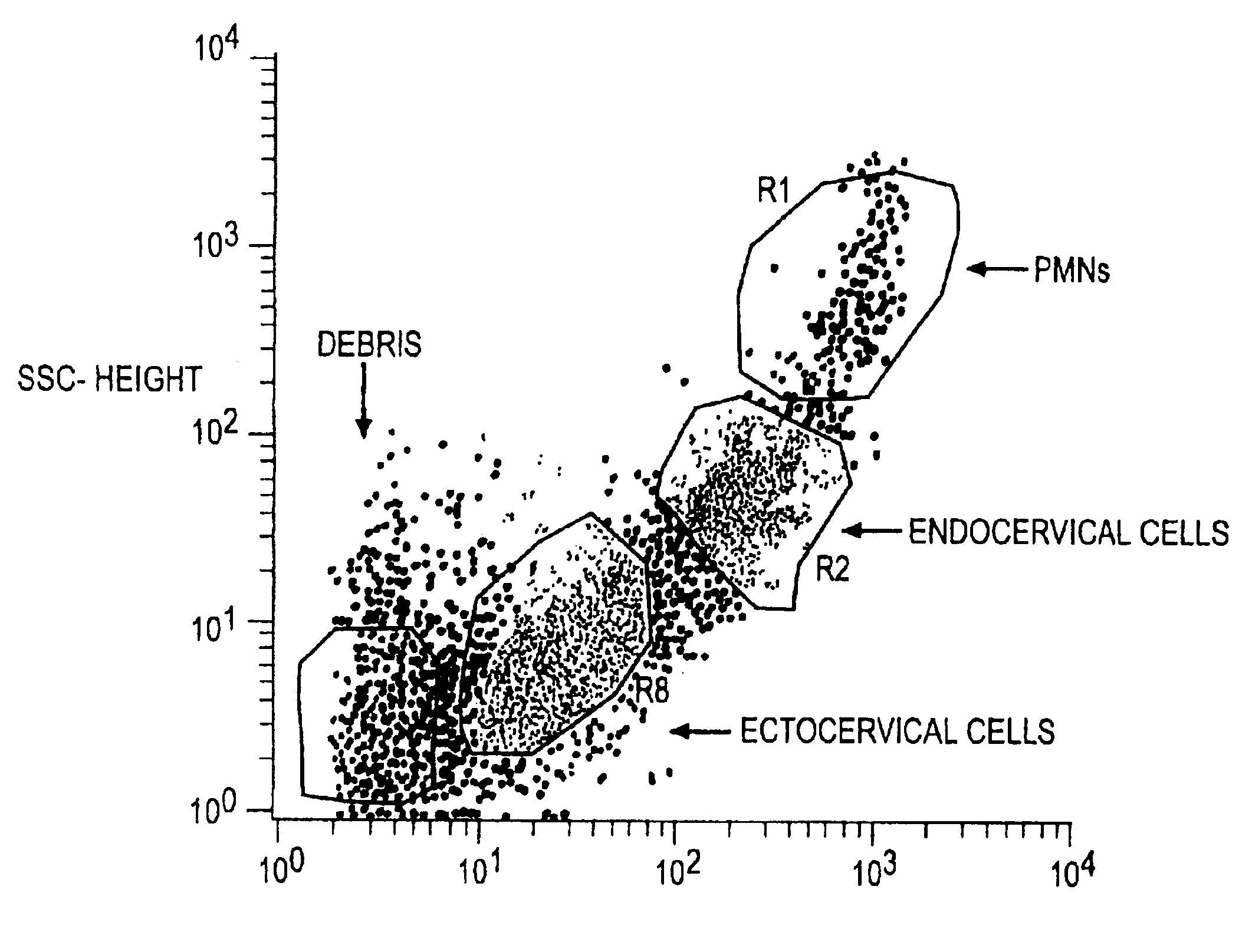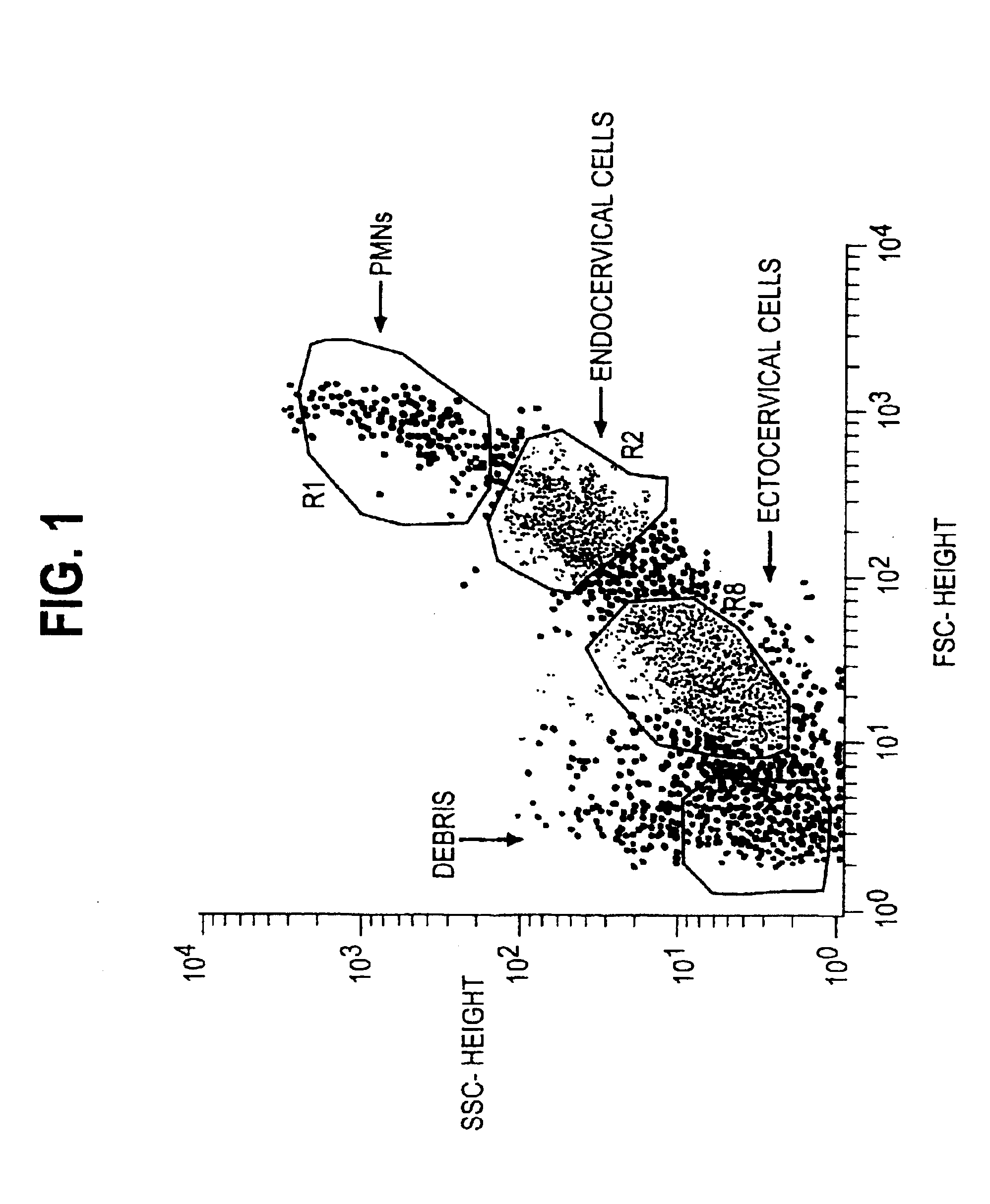Method of testing adequacy of cells in a specimen
a technology of adequacy and specimen, applied in the field of method of testing adequacy of cells in specimens, can solve the problems of inability to properly analyze specimens, huge loss in time and money, and often incurred second charge to obtain second specimens without ensuring that enough target cells were again obtained, etc., and achieve the effect of loss of time and money
- Summary
- Abstract
- Description
- Claims
- Application Information
AI Technical Summary
Benefits of technology
Problems solved by technology
Method used
Image
Examples
Embodiment Construction
[0008]Set forth below is a description of what are currently believed to be the preferred embodiments or best examples of the invention claimed. Future and present alternatives and modifications to the preferred embodiments are contemplated. Any alternates or modifications in which insubstantial changes in function, in purpose, in structure or in result are intended to be covered by the claims of this patent.
[0009]The present invention may be useful in pre-screening or determining the presence of target cells in sufficient quantities prior to subjecting the specimen to further testing. As explained above, screening specimens for adequate amounts of target cells or the presence of target cells which are adverse to a procedure, while a patient is still at a medical facility, will save both time and money.
[0010]To do this, the present invention uses a technique commonly referred to as light scatter. In this technique, a cell is subjected to light applied at a predetermined orientation....
PUM
| Property | Measurement | Unit |
|---|---|---|
| fluorescent emissions | aaaaa | aaaaa |
| structure | aaaaa | aaaaa |
| morphology | aaaaa | aaaaa |
Abstract
Description
Claims
Application Information
 Login to View More
Login to View More - R&D
- Intellectual Property
- Life Sciences
- Materials
- Tech Scout
- Unparalleled Data Quality
- Higher Quality Content
- 60% Fewer Hallucinations
Browse by: Latest US Patents, China's latest patents, Technical Efficacy Thesaurus, Application Domain, Technology Topic, Popular Technical Reports.
© 2025 PatSnap. All rights reserved.Legal|Privacy policy|Modern Slavery Act Transparency Statement|Sitemap|About US| Contact US: help@patsnap.com


